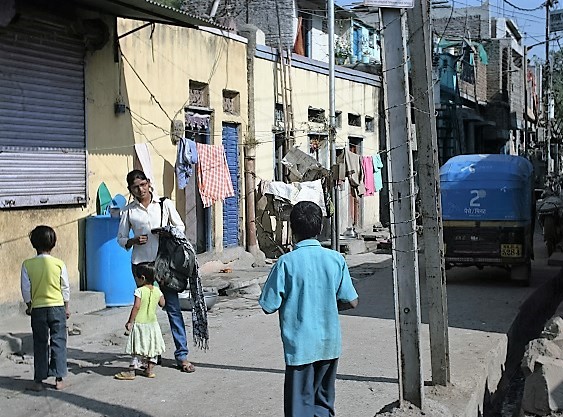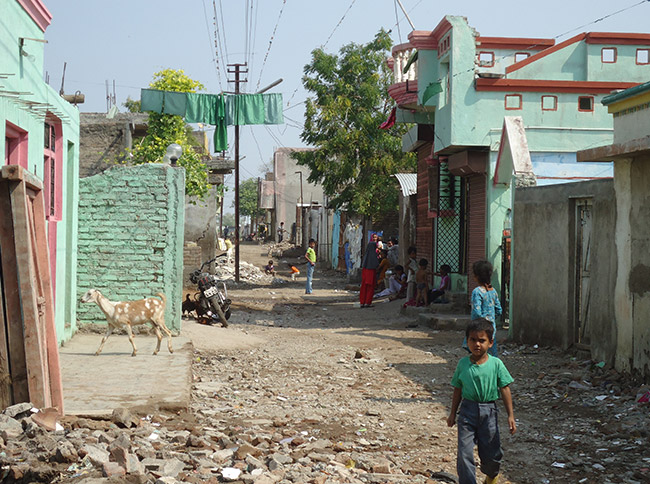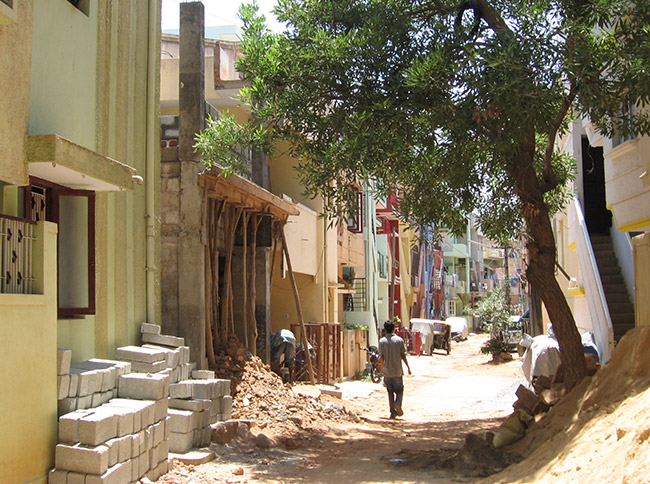
Right to the City as the Basis for Housing Rights Advocacy in Contemporary India
Funded By: Ford Foundation
Duration: March 2016 to November 2018
The Right to the City – introduced by Henri Lefebvre as a key transformative concept, a cry and a political demand to counter the alienation felt by the working class inhabitants of modern Paris, elaborated by Harvey as the right to collectively struggle for the city’s resources and services but also comprising the right to remake the city - can potentially strengthen the discourse of rights and impart it their original intent. A review of these rights indicates that they are partially acknowledged in the international human rights framework; they are hardly acknowledged in the national legal framework and highly contested in policy and governance. Development of a broad-based discourse as the right to city thus cannot be based on rights already articulated in statutes but requires it to be articulated in a way that does justice to the diversity of the situations of urban poor and other socio-economically marginalised urban groups in Indian cities.
It is from this baseline that the project began its work and is envisaged as an empirical investigation of various aspects of city and rights to be brought together eventually under the rubric of right to the city. The project as it unfolds will contribute to an enriched understanding of the city - the space within which many civil society groups operate without substantive engagement with the space itself. It also promises to advance the nature of demands, tools of engagement with city processes among civil society actors. At another level, through its engagement with students and the research community, it will also contribute to the knowledge of substance of these rights and insight into the processes, conflicts and changes in modes of functioning of local governments in advancing the right to the city.
The project, Right to the City, is conceptualised as a multi-vertical project with each vertical addressing particular arenas where people are struggling to affirm their rights to the city. These verticals are as follows.
A) Right to Housing
Researchers: Amita Bhide and Simpreet Singh
The rising urbanisation, economic and spatial restructuring of cities through heightened investments in infrastructure have substantially altered the prospects of excluded groups in accessing the city in India. On one hand, these contexts have created several new categories of vulnerable and excluded groups, on the other the avenues and forums for assertion have changed considerably. In this context, the discourse of housing rights, which has been the conventional base for organising the urban poor, has emerged as an extremely slippery terrain. In an atmosphere where terminology of activism has been incorporated into mainstream developmentalism; there are thin lines between well-being and heightened vulnerabilities, exclusion and inclusion; genuine participation and pseudo forms, voice and representation. Post 2000, housing has become the new development mantra, reflecting several of these dilemmas. While some of the old challenges such as eviction and threats to security of tenure remain, resettlement and relocation in the name of housing, land rights, schemes for housing abound in the country. This vertical situates itself in this situation and will study the experiences of select models of housing rights in the country. These studies document the form in which a particular scheme was articulated, its legal basis, the context within which it unfolded, the way it was delivered on ground and its impact on people.
B) Right to Water
Researchers: Sachin Tiwale and Pranjal Dixit
Right to water has usually been seen as the right of the disenfranchised to access water, in particular piped water. However, in the case of cities which have enjoyed a disproportionately high share of water, the discourse of rights of people in the city needs to be balanced with the rights of people in the region. Planning plays a potentially crucial role in this balance. It is in this backdrop that this vertical seeks to analyse the water resource planning processes adopted by various urban local bodies (ULBs) in the Mumbai Metropolitan Region (MMR). The focus is on analysing the differential norms used by the ULBs while planning and designing the water supply systems producing the inequities among the different ULBs residing in common river basins.
C) Right to Financial Inclusion
Researchers: Sanjeev Chandorkar and Jyotirmayee Mhetre
The urbanisation and informalisation process underway within the country is simultaneously increasing the number of the urban poor and adding to their burdens. The efforts of the urban poor are mainly aimed at ensuring livelihood, securing homes and mitigating vulnerabilities. In order to resolve these on all fronts, however partially, they are themselves responding to financial products/ services offered to them with a hope that they will redress their problems of livelihood (micro credits), health (health insurance), social securities (life insurance and pensions), transfer of funds (remittance) etc. The state too has included the excluded sections of the society into the mainstream financial sector. The state’s initiatives need to be welcomed as they are addressing the needs of the urban poor, while also taking into consideration the regulatory haze and absence of regulatory institutional mechanisms to reach out to distantly located customers. In an era in which “Right to City” is increasingly being confined to "individualistic and property based concepts", one of the few ways in which property-less urban poor can exercise their "right to city" better is by exercising the Right to "Financial Inclusion" being offered to them by the mainstream system and by compelling that system to deal with them as a "collective entity" and not as atomised individuals.
D) Right to the Streets
Researchers: Ratoola Kundu and Anushyama Mukherjee
One of the key stakeholders of the highly contested streets in urban areas and a co-producer of the street as a space of production, accumulation and of livelihood is the street vendor. Street vendors exercise their rights to the street, produce and reproduce it in multiple ways through everyday negotiations and tactics, as well as forging city-wide and nationwide alliances, and firmly rooting themselves in a rights-based discourse where their claims to the street stems from their right to livelihoods, and the larger struggles around the interpretations, implications and implementation of the National Street Vendors (Protection of Livelihoods and Regulation of Street Vending) Act of 2014. This study is located at the cusp of these contradictions and attempts to understand how hawkers and their everyday struggles contribute to the production of urban space, especially the street and the challenges faced by them in the current neoliberal urban regime with respect to the ways in which the street -- design, use, and purpose -- is being redefined by the car-owning middle classes, and the nature of the work performed by street vendors. Research is being currently conducted in Kolkata, across four different markets - Gariahat, Esplanade, Hatibagan and Rajarhat New Town.
E) Universities as Gendered Spaces
Researchers: Molueshri Vyas and Manish Jha
Women students’ presence in public spaces of Indian universities is by and large regulated, movements are controlled and their assertions curtailed. On the other hand behaviors by male students are normalised where the docile female body is given. This study explores the tactical measures used by the female students to negotiate university spaces and assert their presence. What tactics do girls employ for being a part of the university space? What is the aftermath of their protests for access to public spaces? Does it give them more opportunities or does it narrow down their visiting hours? Does going around with a male guardian provide her with legitimacy? With such restriction on movement can an unescorted female student realise her full potential, what are her impediments, what tactical method she adopts to circumvent these hurdles or does she resign herself confirming that it is a legitimate practice. The study is being conducted in Aligarh Muslim University and Banaras Hindu University.
F) Right to Way
Researchers/ Institutes: Himanshu Burte and Hunnarshala Foundation, Bhuj
The street emblematises the concrete everyday reality of cities in India and much of the Global South, and also offers an insight into the workings of larger scale political economic structures. It reveals and hides, simultaneously, the complex mesh of claims and forces that shapes its life, that of the city at large, as well as of larger geographies. This module proposes a set of activities that focus on the social, legal, spatial, and political life of the Southern street with this understanding. Paradoxes organise the Southern street’s reality. The street is simultaneously a valued ‘place’ as well as an often undervalued channel for movement. An infrastructural space exclusively devoted to the movement of people, vehicle and goods in the formal official imagination, it is also a space of informal subsistence, shelter, exchange, accumulation and social reproduction for a large number of people. Many existing streets suffer from excessive investment of infrastructural attention and funds by the state on the one hand, as well as neglect by the official Development Planning imagination (at least in India) that largely focuses on developable land that the street serves. Perhaps the most profound paradox is that a disproportionately large part of the actual social value of the Southern street can be traced to activities and uses that brush against the grain of formal law, policy and regulations. All of these paradoxes can be usefully related to various conflicts over claims, or rights, to the street.



